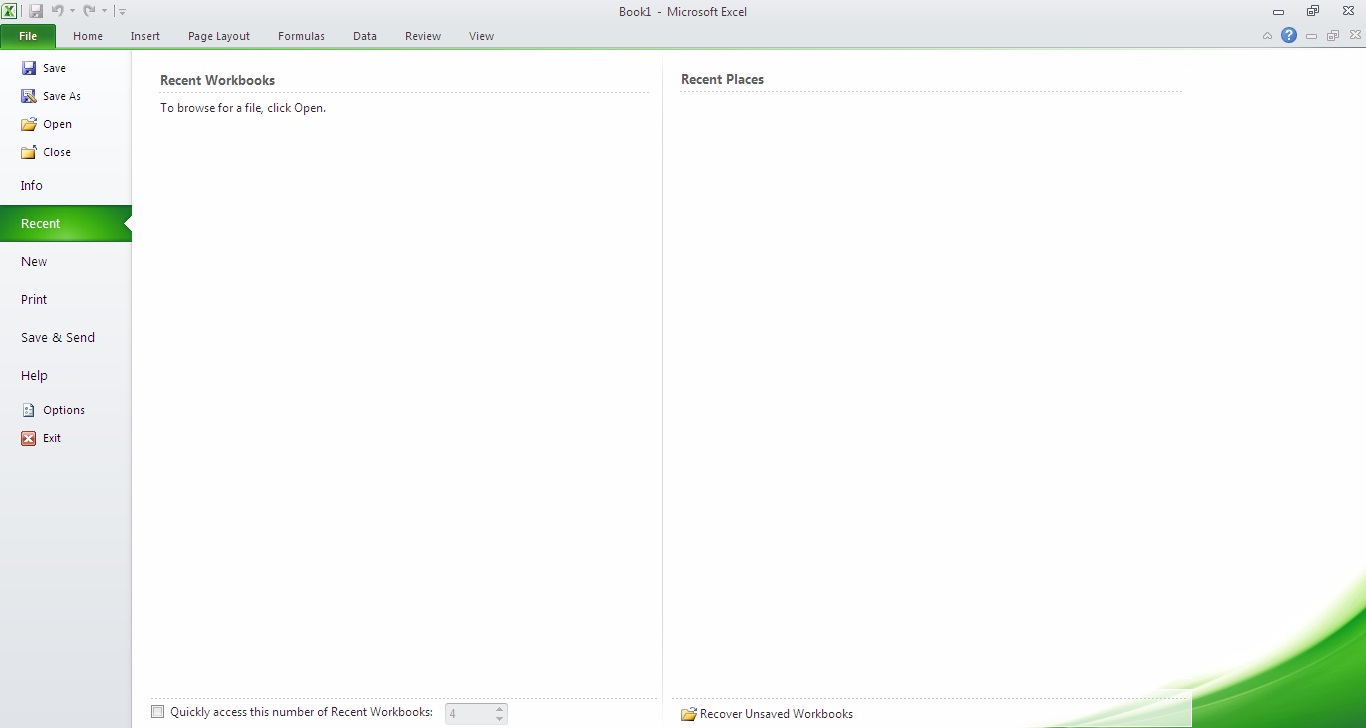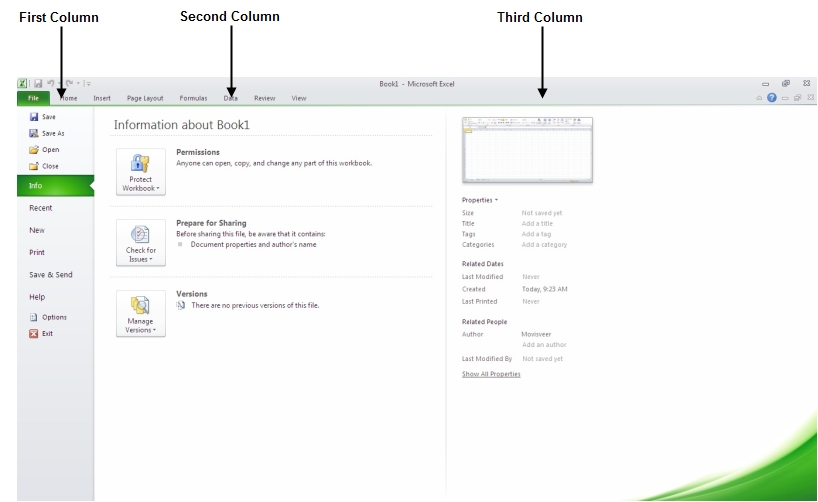Microsoft Excel 2010 Backstage view comes instead of the standard file view. Many operations you want to save, share, print and publish your files are easier with Backstage. For example, all the options you will need for printing are presented in one place in the backstage view.
In Excel 2010, the backstage view was introduced as a central location for handling the sheets. Creating new sheets, saving and opening sheets, printing and exchanging sheets, and so on are all made easier with the backstage view.
It’s easy to get to the Backstage View. Simply select the File tab from the Excel Ribbon’s upper-left corner. If you don’t have any sheets open yet, you’ll see a window that lists all of your recently opened sheets as follows:
 If you have an opened sheet and then it displays a window displaying the information about the opened sheet. Backstage view shows three columns when you select most of the options available in the first column.
If you have an opened sheet and then it displays a window displaying the information about the opened sheet. Backstage view shows three columns when you select most of the options available in the first column.
 The first column in the backstage view will have the following options:
The first column in the backstage view will have the following options:
| Option | Description |
| Save | If an existing sheet is opened, it will be saved as it is, otherwise it will show a dialog box asking for the name of the sheet. |
| Save As | A dialog box will be shown asking for the name of the sheet and the form of the sheet By default, this will be saved in the 2010 with .xlsx extension. |
| Open | This option opens up an existing excel spreadsheet. |
| Close | This choice is used to close the open spreadsheet. |
| Info | This option will show the details on the opened document. |
| Recent | This choice lists all recently opened sheets. |
| New | To open a new sheet, select this option. |
| This option is used to print a sheet that has been opened. | |
| Save & Send | This option saves an open sheet and shows options for sending it by email, among other things. |
| Help | You can use this option to get the help you need for Excel 2010. |
| Options | Use this option to set different excel 2010 related options. |
| Exit | Use this option to close and exit the sheet. |
Sheet Information
When you choose the info choice in the first column, the backstage view shows the following information in the second column:
• Compatibility Mode: If the sheet is not a native excel 2007/2010 sheet, the Convert button will appear here, allowing you to quickly change the format of the sheet. Otherwise, this category would not appear.
• Permissions: You can use this option to secure your Excel sheet.
You can set a password so that no one can open your sheet, or you can lock the sheet so that no one can edit your sheet.
• Prepare to share: This section illustrates valuable details that you need to know about your sheet before you submit it to others, such as a record of the edits you made when you created the sheet.
• Versions: If the sheet has been saved many times, you can be able to access previous versions of the sheet from this section.
Sheet Properties
When you choose the Info option in the first column, the backstage view shows various properties in the third column. Sheet sizes, title, tags, categories, and so on are examples of these properties.
You may also make changes to a number of properties. Simply click on the property value, and if the property is editable, a text box will appear where you can enter your text, such as title, tags, comments, and Author.
Exit Backstage View
It’s easy to exit the Backstage View. To return to Excel working mode, click the File tab or press the Esc key on the keyboard.
 Dinesh Thakur holds an B.C.A, MCDBA, MCSD certifications. Dinesh authors the hugely popular
Dinesh Thakur holds an B.C.A, MCDBA, MCSD certifications. Dinesh authors the hugely popular